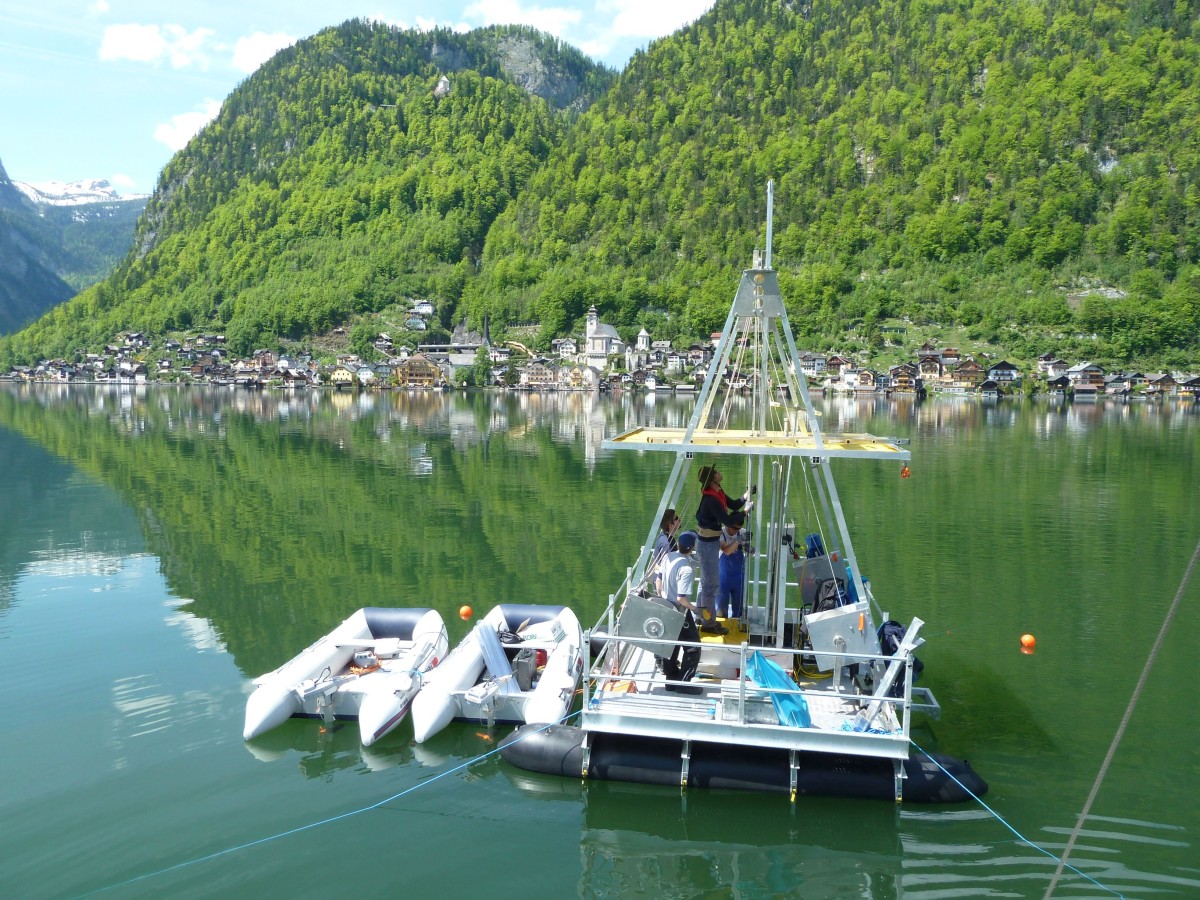Hallstatt-Research
The site of Hallstatt in Upper Austria has been researched by the Prehistoric Department for over 100 years in cooperation
with Salinen Austria AG and the Salzwelten museum. In the archaeological world, this site in the Dachstein Mountains is famous above all for finds from a burial ground of
the Early Iron Age, which gave Hallstatt its name for an era throughout Europe.
In addition to the cemetery with its extraordinarily rich grave goods, the finds from the prehistoric mines are now known
worldwide, which, thanks to the preservation conditions in the salt mountain, cover an extraordinarily broad spectrum. The
research of the Prehistoric Department is currently focused on the economic system in the surrounding area, in addition to
the study of the cemetery and the mining facilities.
Hallstatt Research has its own website and also provides information about current events in two weblogs: The Stiegen-Blog provides
an insight into the work surrounding the relocation of the over 3000-year-old wooden staircase from the Hallstatt salt mine.
The blog „Wood for Salt“ provides information about the Sparkling Science project of the same name, in which schools from the Hallstatt area participated.
Economic infrastructure
The economic area of Hallstatt is being researched by Mag. Kerstin Kowarik at the Prehistoric Department as part of several projects. She is concerned with the question of what this economic structure needed in order to function and how the individual needs (e.g. operating resources, labor and food) could be met. In addition to the site of Hallstatt, the surrounding area is also being researched with the help of landscape and environmental archaeological methods as well as computer simulations. The landscape archaeological aspects include research into agricultural settlements, road systems and potential nodes for trade and supply, which can be mapped and evaluated with the help of a geo-information system. Environmental archaeology taps into various archives in the ground, such as bogs or lake mud. Through this, information can be gained about past environmental conditions and influences exerted by man. For a better understanding of the complex economic system and its interconnectedness with its environment, the Prehistoric Department is also one of the first research institutions in Europe to use computer simulations, which can constantly adapt and update the constantly growing amount of data and its rich network of relationships.
Individual Projects
- The project "Hall-Impact" deals with the economic and cultural development of the prehistoric salt mines in the Hallstatt high valley and its surroundings.


